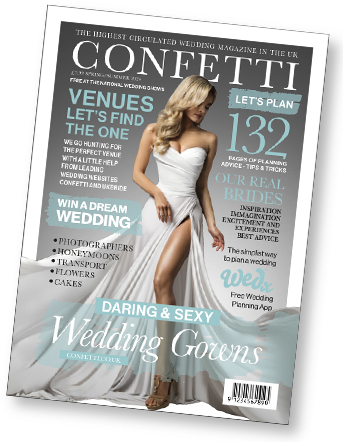When you’re thinking about buying a diamond it can conjure many emotions. Not only is it an exciting happy time, choosing the perfect ring, it can also be a little overwhelming. The pressure of making such a life-long investment can sometimes leave you wondering where to begin. If you’re thinking about choosing a diamond engagement or wedding ring take a look at our simple steps to guide you in the right direction.
Choose your style

Whether you’re choosing your own diamond ring, or buying a diamond for someone else, it’s a good idea to have a style in mind. If you’re choosing for someone else, think about the type of jewellery they already wear – is it rose gold or yellow gold? Do they wear platinum? Do they wear jewellery at all? If not then perhaps something subtle and understated might be the best choice.
Other styles may include vintage jewellery, contemporary, delicate or chunky, think about the style of ring you or your loved one likes and search for images online for inspiration.
Top tip: If you prefer the cool tones of silver, try opting for white gold or platinum. These metals are more durable, and less likely to soften and lose shape over time, or even worse, lose diamonds.
Choose your diamond shape

Once you have chosen your style and metal, take a look at the diamond shapes available and which ones you like. The most common shapes are round, princess, pear, cushion, heart, oval and marquise. There are of course many other diamond shapes available however it’s a good idea to think about lifestyle and what will work well on a practical level too.
READ MORE: Princess-Cut Engagement Rings – Our Favourite Fairytale Designs
If you’re planning on wearing your diamond ring all the time and you work with your hands, or in a very active job it would be better to look at flatter less intricate designs that will be less likely to catch or spoil. Think about simple shapes such as princess cut and round cuts, and choose a long lasting durable metal such as platinum to hold your diamond firmly in place.
Be Mindful of the 4 C’s When Buying a Diamond

By remembering the 4 C’s when you are buying a diamond – cut, carat, clarity and colour, you can be confident in determining the true value of your diamond. Diamonds are often measured using the GIA rating (The Gemological Institution of America), although not all diamonds are, you will find this non-profit institute grading is an ideal place to begin if you are not sure what to look for. Ask your jeweller if your diamond is, or can be GIA graded.
Cut
The cut of a diamond is crucial to the value of the stone and can be graded accordingly. If it has been carefully and expertly cut the diamond will deliver an intense light and sparkle (often referred to as scintillation), it will also determine the brightness and light reflecting qualities of your diamond. Your diamond will reflect and scatter colour, often referred to as the fire, ask your diamond expert to determine the quality of the cut of your diamond.
Carat
The carat refers to the weight of your diamond. One carat is made up of 100 points, and the more your diamond weighs the greater the carat will be e.g. 1 carat (100 points), 0.25 carat (one quarter of a carat). Generally speaking the larger the carat the greater the price, however you must be aware of the quality of the diamond when making your purchase. For example, your diamond may be 1 carat in weight, but poor in clarity therefore making it less valuable than a smaller better quality diamond. Ask your jeweller about the carat of your diamond, along with the cut, clarity and colour at the same time.
Clarity
Natural diamonds form over millions of years deep in the earth. Therefore the clarity of your diamond will be unique. Over time during formation your diamond is likely to gain minor blemishes and marks, these are often called inclusions. The less inclusions your diamond has, the greater the purity, and of course the value. It is very rare to find a diamond without any inclusions, and don’t worry you won’t be able to see these marks with the naked eye. Ask your jeweller to determine any significant inclusions and to confirm the clarity rating.
Colour
Your diamond might be graded using the GIA system. This grades diamond colours from D to Z. D grade diamonds would represent a colourless, completely clear diamond, whereas a Z grade diamond would have a much more yellow/brownish tone. Many colour variations are impossible to see without magnification, so ask your jeweller if your diamond has a colour grading.
You can also find coloured diamonds although they are more rare. This happens when different elements have entered the diamond during formation, occasionally creating a tint of colour such as pink or yellow.
Synthetic or Natural Diamonds?

A synthetic or lab grown diamond is a stone that has not been formed naturally. It has been grown in a laboratory. Many people are opting for synthetic diamonds as they are deemed both responsibly sourced and more affordable than many naturally sourced diamonds.
Natural diamonds are derived from deep inside the earth and formed over millions of years. Natural diamonds are often more desirable as they are more rare and precious, however it is important to ensure your diamond has been ethically and responsibly sourced. Your jeweller will be able to provide this certification.
Timings
Determine how long it will take to design and craft your diamond ring. Ensure you leave enough time for it to be made ready for your proposal, or engagement.
Proposal

So now it’s the exciting part where you can think about how you are going to ask the all important question. Not sure how to propose? Take a look at our favourite ways to pop the question.

